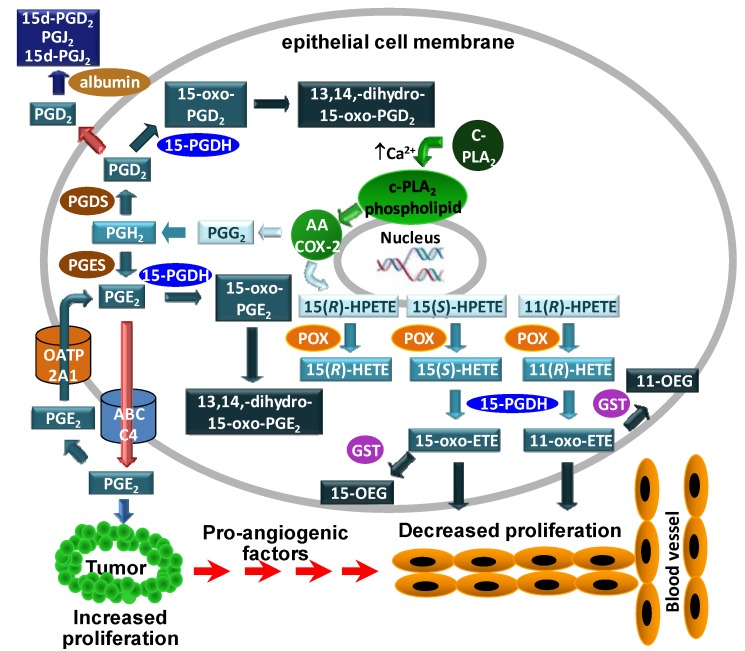Figure 3.
Formation and action of COX-2-derived eicosanoids in epithelial cell models. arachidonic acid is released from membrane phospholipids by calcium-dependent cytosolic phospholipase A2 (cPLA2). The released arachidonic acid undergoes COX-2-mediated metabolism to PGs or forms the lipid hydroperoxides, 15(S)-hydroperoxyeicosatetraenoic acid (HPETE), 15(R)-HPETE and 11(R)-HPETE, which are reduced to the corresponding HETEs. PGD2 and PGE2 are inactivated by 15-PGDH-mediated conversion to their 15-oxo metabolites. Both 15-oxo-PGD2 and 15-oxo-PGE2 are converted to 13,14-dihydro-5-oxo-PG metabolites. Intact PGD2 secreted by the epithelial cells can undergo albumin-mediated dehydration to 15d-PGJ2. PGE2 secreted from the epithelial cells by the ABCC4 transporter is pro-proliferative for tumor cells. Reuptake of PGE2 by OATP2A1 into the epithelial cells leads to further 15-PGDH-mediated inactivation. In contrast to PGE2 and PGD2, 15(S)-HETE and 11(R)-HETE are activated by 15-PGDH-mediated oxidation to 15-oxo-ETE and 11-oxo-ETE, respectively. The oxo-ETEs are further conjugated to form OEGs. Secreted 15- and 11-oxo-ETE that escape further metabolism can then inhibit endothelial cell proliferation. Therefore, down-regulation of 15-PGDH and OATP2A1 would result in increased PGE2-mediated tumor and endothelial cell proliferation. Reprinted with permission from Ref [110].

